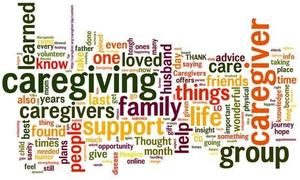The growing ecosystem of devices and products serving peoples’ health and well-being shows us that innovators already see the opportunity to serve the fast-growing market for self-care among people 50 years of age and up.
For nearly twenty years, one thing has felt inevitable: when boomers reach “old age,” senior living demand will surge. And yet ..
ChatGPT Health builds on consumer use of today's ChatGPT so responses are informed by your health information and context.
The prize honors .lumen’s Glasses for the Blind, an AI-based device that applies autonomous driving technology adapted for pedestrians. Using computer vision and local processing, the headset understands the three-dimensional environment in real time without relying on the internet or pre-defined maps and guides the user through subtle vibrations indicating a safe direction to follow.
The United States faces a fundamental mismatch between surging demand and insufficient capacity.

 In 2017, has telehealth and remotely-delivered care evolved? Compared to our
In 2017, has telehealth and remotely-delivered care evolved? Compared to our  Pitch events precede clarity of offering which precedes... Hopefully the best pitches of best offerings will be funded. But that funding is linked to detailed criteria (see the
Pitch events precede clarity of offering which precedes... Hopefully the best pitches of best offerings will be funded. But that funding is linked to detailed criteria (see the  AARP’s Innovation 50+ Live Pitch starts today – what's new? This marathon tried to put 20 pounds of entrants (culled from many more) into the 10-pound bag of a two-day pitch event across two broad categories. So following this trend towards compression, we will leave
AARP’s Innovation 50+ Live Pitch starts today – what's new? This marathon tried to put 20 pounds of entrants (culled from many more) into the 10-pound bag of a two-day pitch event across two broad categories. So following this trend towards compression, we will leave  Pundits perpetuate the myth of non-use of so-called caregiver technology. [Rant on.] According to AARP, 40 million caregivers are taking care of an older, sicker person -- so says an oft-quoted
Pundits perpetuate the myth of non-use of so-called caregiver technology. [Rant on.] According to AARP, 40 million caregivers are taking care of an older, sicker person -- so says an oft-quoted  Market sizing, trending, and targeting all depend on data. Marketers understand this – and their sources,
Market sizing, trending, and targeting all depend on data. Marketers understand this – and their sources,